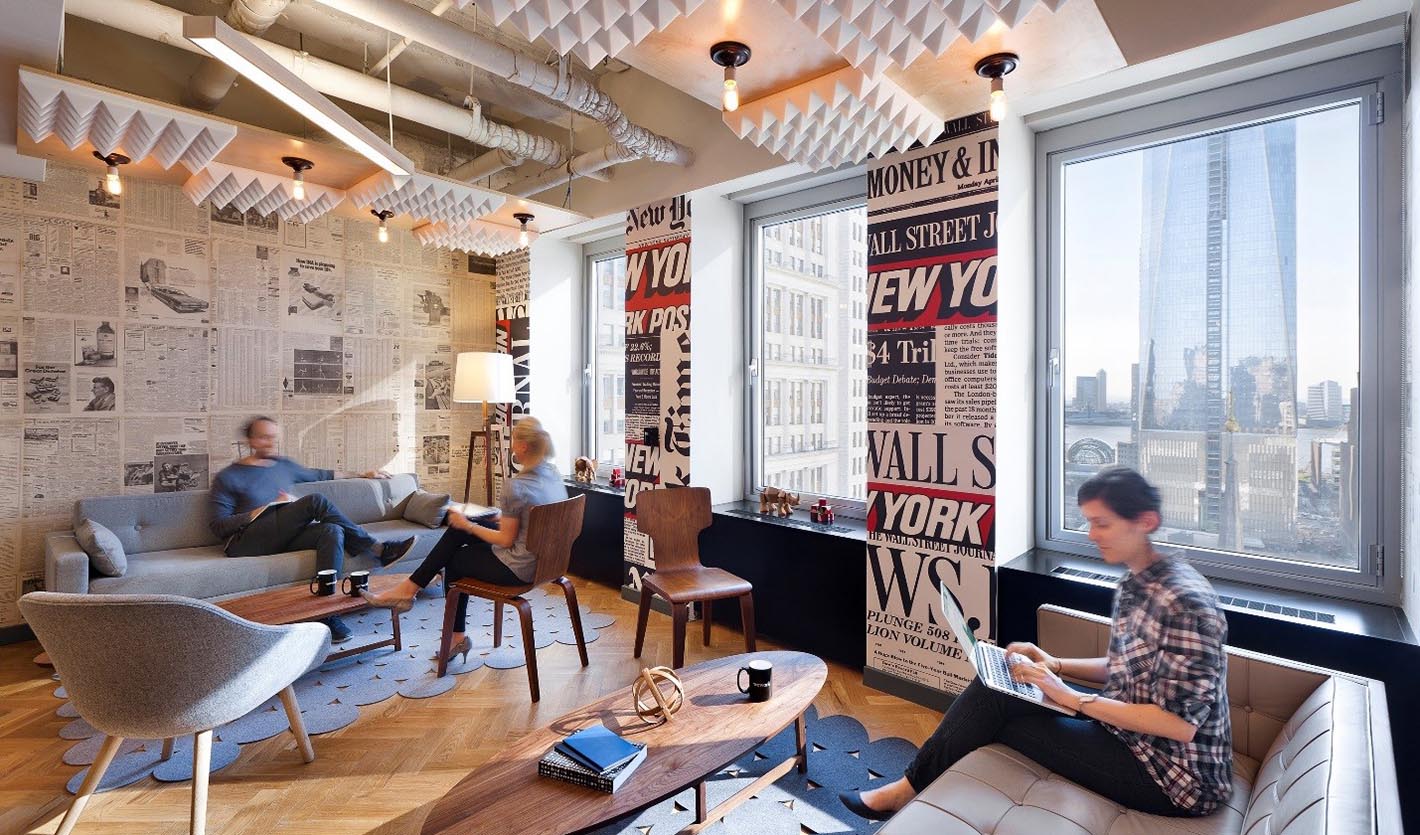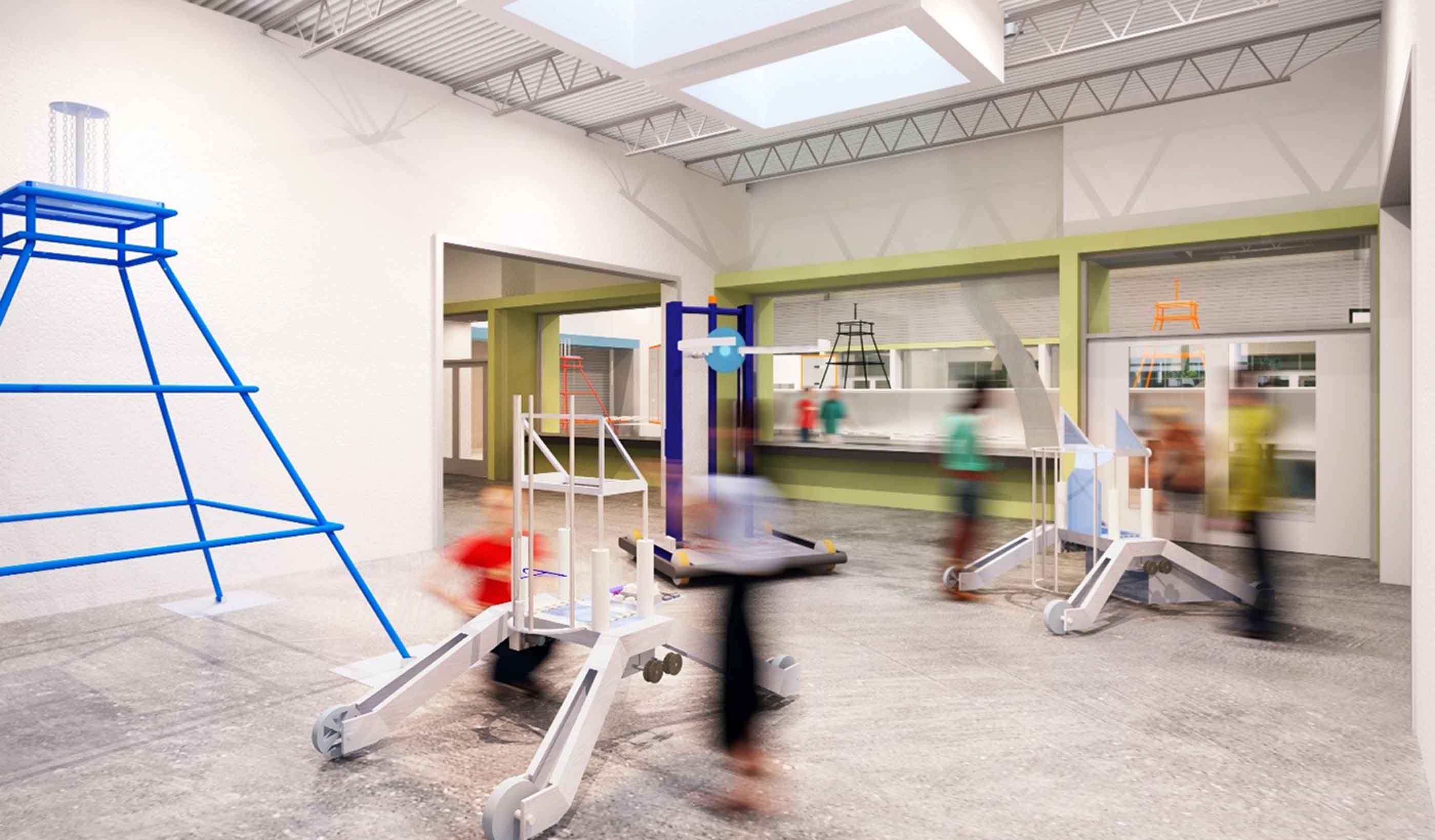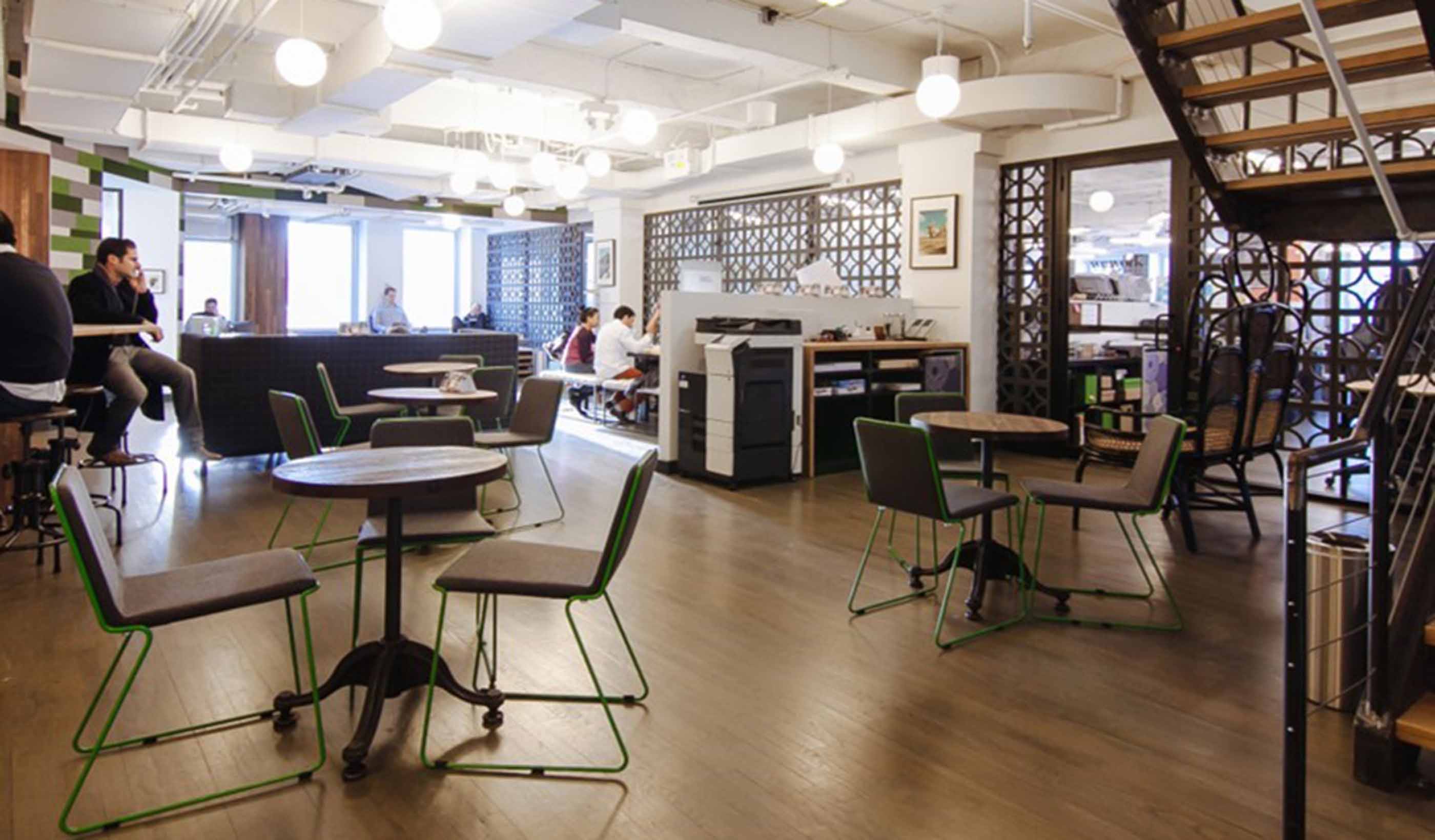Why your office needs a makerspace—it’s about investing in the creative workplace
June 07, 2018
June 07, 2018
Harvesting creativity and innovation requires the right spaces and creates a culture that attracts the best employees
Fortune 500 companies are losing some of their best people and don’t know why. It’s not always higher salaries. What is the top talent looking for? Frequently, the answer is a desire for purpose and meaningful work. The greatest war for talent we have ever seen is around engagement. Engagement is crucial to attracting talent—and the alternative is expensive.
Gallup research tells us that $450 billion is lost each year in the US to disengagement in the workplace. And those that can harness the power of the creative class have an advantage in business. Innovation can make or break companies in emerging industries, so engaging top creative talent is crucial.

WeWork, New York, NY.
That’s where makerspaces come in. Building a culture of “intraprenuership” (internal entrepreneurs) is a key component in anticipating what’s next, and this can only happen when your people have the right places to create, nurture, and manifest their ideas. Makerspaces in the workplace are inspired in part by the collaborative spaces pioneered by tech start-ups. Harvesting our talent’s creativity and innovation requires the right spaces and, in turn, creates a culture that attracts the best. While a makerspace is but one attractive aspect of culture, it can be a crucial element in today’s battle for talent.
Before you dive in, start by asking yourself three critical questions to determine the kind of a makerspace will fit your needs:
Is it solar cars? Is it quilts? Is it catapults? Is it marshmallow and spaghetti structures? Having a good sense of what will be created in your space will largely determine your technology, equipment and material needs, and, from that, the general type of space required. In our research we’ve defined four types of makerspaces for education and workplace environments: the crafting space, the coworking space, the fabrication lab, and the industrial design shop. (Keep an eye on this blog for more about makerspace types and makerspace ideas.)
Storage is critical to the functionality of a makerspace. The type of storage the space will require depends on the technology and materials used there, the size of what will be stored, as well as the duration of storage required—from a few days for short-term projects to months for semester-long higher-ed projects.
Building a culture of “intraprenuership” (internal entrepreneurs) is a key component in anticipating what’s next, and this can only happen when your people have the right places to create, nurture, and manifest their ideas.
Will someone staff the space full-time? If not, how will safety be maintained? With swipe-card systems that can validate a user’s training? Will the makerspace be open to the public or a select group of people? Who is responsible for clean-up, ordering materials, and resetting the space?
Here’s another reason to consider a makerspace: new hires have likely been working in one for years. Higher education and K-12 facilities have adopted the makerspace as a valuable setting for collaborative innovation, as they strive to prepare students for the workforce.
Conversely, the workplace must keep up with what’s happening in colleges, universities, and career and technical schools. Today, students are emerging from years of studying in truly collaborative, creative educational spaces into the workforce and they won’t be content to just sit in a workstation.

STEM Project Center, Katy, TX.
Real estate costs only make up 10% to 12% of total corporate spending—with most companies spending almost 80% on people, salaries, and benefits. So, every dollar of spending on the workplace must be thoughtfully aligned with goals for culture. We believe by shifting our focus to better align people’s needs and desire for purpose and meaning we can truly harness and impact their creativity. That focus on creativity and a culture of makers will yield long-term results in innovation and evolution. By making your company more attractive to those who want to make breakthroughs, you will make a critical investment in your culture and your ability to attract top talent, two things that make or break a business in our era.

WeWork, New York, NY.
An investment in a makerspace is about creating long-term culture change and adjusting the workplace to suit people and their creativity. The paybacks on this investment are innovation and an attractive creative culture.
Your creative workforce will enjoy the ability to see their ideas and innovation manifested. This culture change means recalibrating what success looks like. Your output isn’t going to be a measurement of how many widgets made in a day, but rather how well you’ve positioned yourself to take advantage of the next big idea. How do we generate the thinking and harness that spirit and that culture? That’s the question we’re trying to answer with these spaces.
You won’t magically create an inspirational, innovative culture of making by dropping a 3D printer in the corner of your office. A comprehensive approach to culture is necessary. A new space will not solve every problem, but it has the power to shape and inform behavior. The makerspace in the office can solve one piece of a larger cultural puzzle about your organization: Who are you and where are you going? What will be your lasting impact on the world?